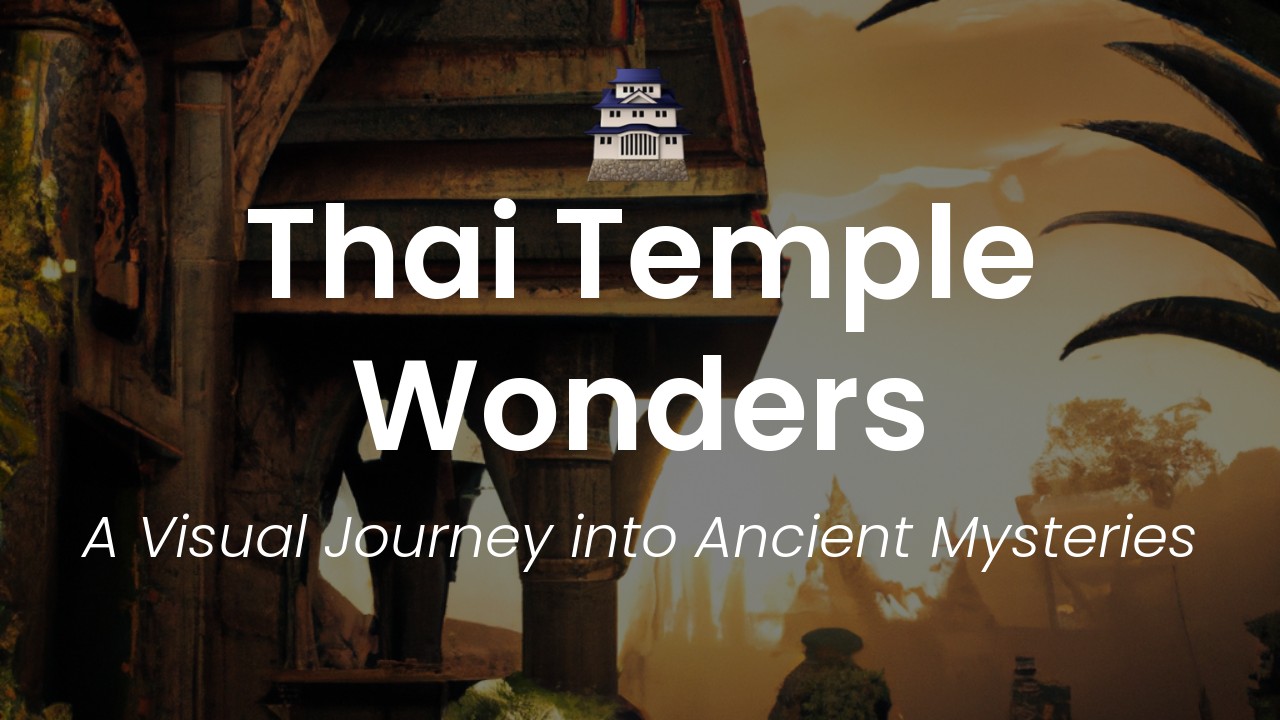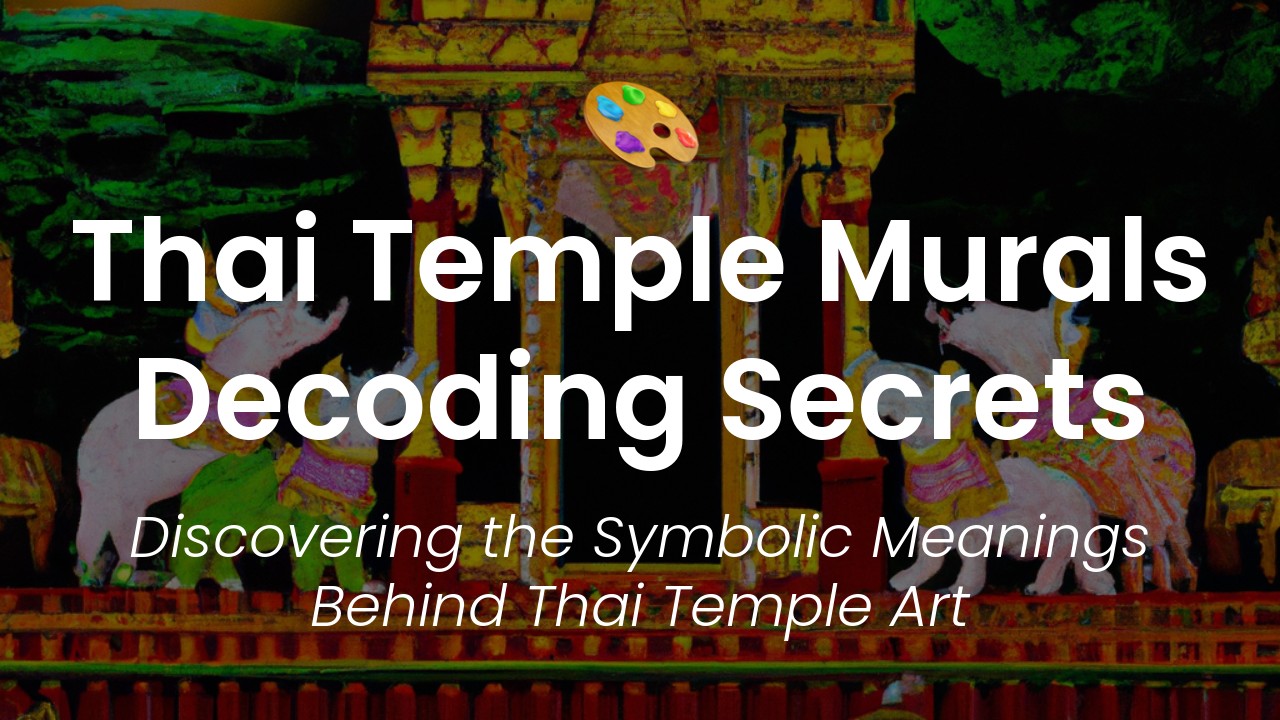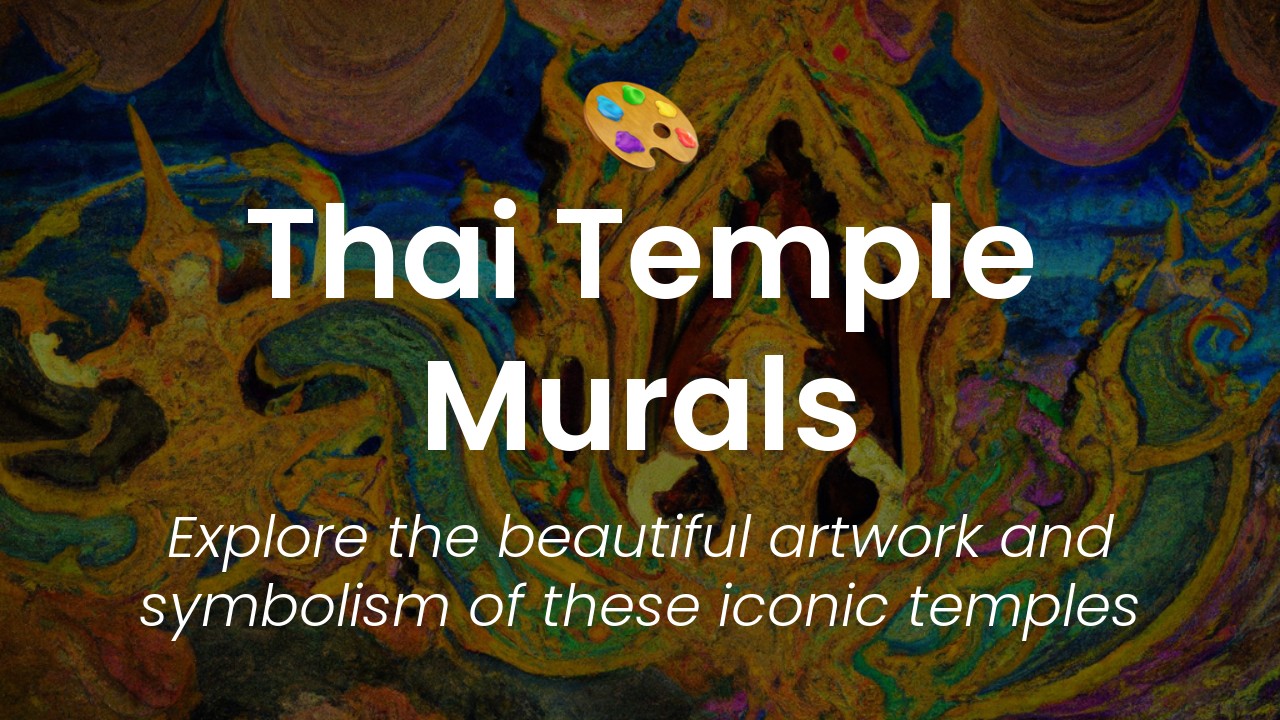As a passionate blogger about Thai culture and tourism, I am always eager to share with my readers different aspects of my country's rich cultural heritage. Today, I would like to dive deeper into the fascinating world of Thai temples and explore the intricate architectural elements that make them so unique and awe-inspiring.
Thailand is a predominantly Buddhist country, and as such, temples (or "wat" in Thai) play a significant role in the nation's social, cultural and religious fabric. Thai temples have a long and rich history, and they have evolved over the centuries, incorporating elements from various Asian cultures and traditions.
What makes Thai temples stand out from their counterparts in other parts of the world is their intricate and ornate designs with numerous intricate details. The roofs of Thai temples are typically adorned with a series of golden and brightly colored ornaments that glitter in the sunlight, providing visitors with a glimpse of the beauty that lies within.
In this article, we will embark on a journey to discover the fascinating architectural elements that are an integral part of Thai temple tradition. From the soaring pagodas and intricately carved wooden panels to the ornate gables and towering structures, we will explore some of the key attributes that make these revered sites so special and beguiling. So, let's start our journey, shall we?
History of Thai Temple Architecture
Thai temple architecture has a long and rich history spanning over centuries. It has influences from the Hindu, Khmer, Chinese and Mon cultures that have contributed to its development over the years. The architecture is not only significant for its captivating beauty but also for its spiritual significance.
The designs of the temples were inspired by the monkhood, the power, and prestige of the ruling dynasty, and the beliefs that the Thais held. The temples were the main meeting point of the communities, the places where religious rituals and ceremonies were held, and where people gathered to listen to teachings and sermons.
The Importance of Buddhism in Thai Architecture
From the very onset of the Thai civilisation, Buddhism has played an important part in the everyday life of the Thai people. The religion's influence is evident in the designs of temple architecture. Thailand boasts over 40,000 Buddhist temples, making it home to the highest number of temples in Southeast Asia.
Buddhism upholds the belief of nirvana, and the architecture of temples reflects that belief. The temples were designed to be an escape from the pains of the earthly realm to the beauty and peace of a spiritual realm. The architecture's purpose was to teach the people about the central teachings of Buddha so that they could find their way towards their spiritual selves.
Stupas and Chedis: Iconic Structures
Stupas are one of the most classic architectural elements of a Thai temple. Also known as Chedis, stupas, generally serve as a container for sacred relics or the remains of monks. The design of the stupas can vary from one temple to another, but they typically feature a highly stylized bell shape, a square base, and a lotus flower capped by a spire.
Chedis have significant spiritual symbolism because they represent the idea of a mountain that serves as the gateway to another realm. They also serve as a visual reminder of the Buddhist teaching of the eight-fold path, which is the aim of every practitioner to become enlightened and reach Nirvana.
Fused Cultures: Chinese-Thai Influences
Buddhism came to Thailand from China, which is why it is not surprising that Thai temple architecture shows a strong Chinese influence. Most Thai temples feature strikingly designed roofs with curved points, animal sculptures, and ornate stonework that resembles the traditional Chinese architecture found often found in Chinese temples.
However, these Chinese features have undergone some Thai interpretation, and that has resulted in a form of architecture that is unique, creative and full of wonder. It is a true testament to the creative developments that occur when different cultures merge and innovate together.
Unseen Details: Mural Paintings and Reliefs
Mural paintings and reliefs are other essential elements of Thai temple architecture. Most of the murals and reliefs depict scenes from Buddha's life and past lives, and they serve as a visual teaching aid to the people who come to the temple.
From gold floating flowers to scenes of Bodhisattva on cranes, these intricate details have a symbolic representation and are a sign of the Thai people's devotion to Buddhism. The temples' murals also feature fantastic mythological stories, designs from Indian epics, and ghosts, ensuring that they are never dull.
Ornamental Elements: Gables, Finials, and Naga Staircases
Thailand temple architecture has heavily ornate designs, and the use of gables, finials, and naga staircases contributes to the aesthetic appeal of the overall architecture.
Gables feature intricate designs usually in an L-shaped frame, and they often feature replicated designs of animals, spirits, or deities. The finials can be angular or curvaceous and are often found on the top of rooftops, doors, and corners. Naga staircases also make up the elaborate decor, with serpents and dragons shaping the banisters, balustrades, and railings in a whimsical and eye-catching way.
The Future of Thai Temple Architecture
Thai temple architecture has been constant for centuries, but significant changes have occurred over the years to enhance its beauty and power. Many modern designers and architects are harnessing technology to redesign and create contemporary structures with the temple's traditional elements as the base.
The main challenge lies in creating structures that reflect the past and the present, paying attention to the traditional symbolism while also accommodating many modern amenities and accessibility requirements. The temples are vital to the Thai community's social and cultural life and must remain so for a long time.
Conclusion
Thailand has a rich and fascinating history of temple architecture that spans centuries. The architecture has been heavily influenced by Buddhism, Chinese, Khmer and Mon cultures, resulting in a design that is unique, creative and inspiring. While difficult challenges lie ahead in the future of this architecture, the temples will remain a vital part of the Thai people's lives, reflecting their culture, traditions, and spirituality.





